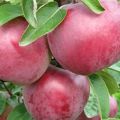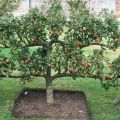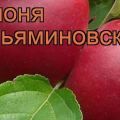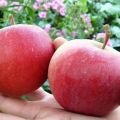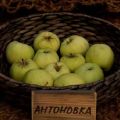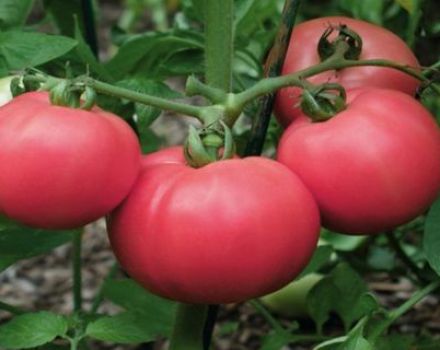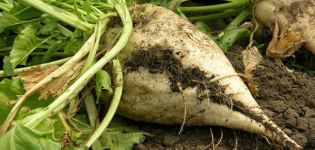Description and characteristics of the Zhigulevskoe apple variety, stage-by-stage planting and care
Winter apple varieties are valued higher than summer ones due to the duration of the storage of fruits. One of these hybrids is the Zhigulevskoe apple variety. Zhigulevskoe is distinguished by a number of advantages that attract gardeners to planting this particular variety. The tree is unpretentious in care and is characterized by abundant fruiting from August to the last days of September.
Description and characteristics of the Zhigulevskoe apple tree
First of all, when choosing a variety, attention is paid to such characteristics of a tree as:
- tree height and crown width;
- taste of fruits;
- root system;
- winter hardiness;
- fruiting period;
- yield.
All these indicators must be carefully studied before purchasing a Zhigulevskoye apple tree seedling.
Tree height
Apple-tree Zhigulevskoe belongs to medium-sized trees. The main trunk reaches 3 m in height. In order to regulate the height of the tree, it is pruned every year.
Crown width of the variety
The crown of the apple tree is rounded, slightly thickened. The branches are sparse and grow upward. The crown is translucent to the trunk. Trees with a slightly thickened crown require less time to leave, since even the smallest branches receive sunlight due to the low density.
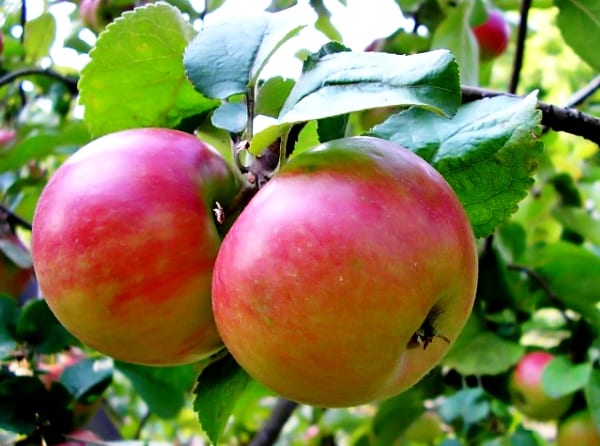
Tasting assessment
Apples of this variety are distinguished by high taste of the fruit. Due to the high liquid content, fruits are suitable for dietary nutrition.
The pulp is coarse, juicy and sweet with a pleasant sourness. The peel is dense, deep red with green spots. The pulp is creamy.
Self-fertility
The apple tree Zhigulevskoye belongs to self-fertile varieties, therefore, additional pollination is required for the appearance of ovaries. Other varieties of apple trees are planted in the garden next to the tree. The best pollinating varieties include:
- Anise Gray.
- Spartak hybrid.
- Antonovka.
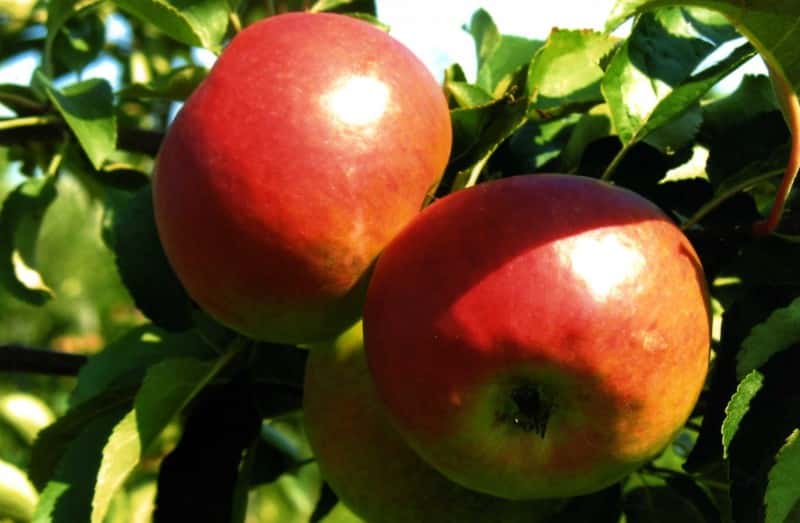
Pollination will be successful if the distance between the trees is not more than 5 m.
Root system
The rhizome of the Zhigulevskoe hybrid is well developed, but does not tolerate excess moisture well. Because of this, the seedlings are not recommended to be cultivated near the accumulation of water in the spring.
Winter hardiness
Resistance to winter frosts in the Zhigulevskoye variety is average. The tree does not tolerate constant temperature fluctuations and severe frosts in winter.

The beginning of fruiting
After planting the seedling in a permanent place, the apple tree begins to bear fruit in the 3-4th year after planting. The beginning of fruiting depends on several reasons, which include:
- kind of rootstock;
- apple tree care;
- climatic conditions.
The faster the apple tree begins to bear fruit, the shorter the whole fruiting.
Yield
The apple-tree Zhigulevskoye is distinguished by its high yield. Up to 250 kg of fruits are harvested from one adult tree. Fruiting at a high level occurs annually. Old apple trees have breaks, but not more than one year.

Rules for choosing seedlings when buying
First of all, attention is paid to the root system. The roots must not be damaged or dry. In addition, the roots should not be exposed. The seedlings are sold either in soil or in special packages. The seedling must be grafted, and the stem must not be damaged.
How to plant a tree
Planting an apple tree seedling consists of several successive stages, which take a lot of time. Indeed, the future yield and health of the apple tree depends on how correct the planting will be.

Time to board
Apple trees are planted in the spring and autumn. In the spring, the seedlings will have time to take root before the onset of cold weather. Planting dates depend on the growing region. The apple tree is planted from the last days of April to the first days of May. In autumn, apple trees are planted in early October. The advantage of autumn planting is that the apple tree gets used to a new place during the winter and begins to grow actively in the spring.
Seat selection
The apple tree variety Zhigulevskoye prefers to grow in open sunny areas or in places with slight darkening. It is not recommended to plant seedlings in the shade. In the shade, they grow poorly, and the yield decreases.
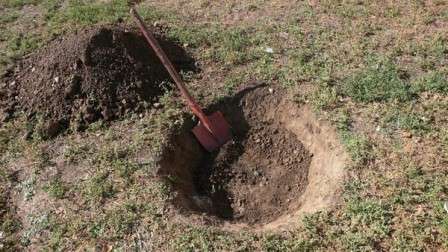
Seedling preparation
The day before planting the tree in the ground, the rhizome is soaked in the preparation "Kornevin" diluted with water. Other crop growth promoters are also used. Before planting, the roots are dipped in clay diluted with water and after that they start planting. It is important to remember that the rhizome should not dry out. Therefore, the roots are regularly moistened with warm water.
Planting process
Stages of planting seedlings:
- A month before planting the apple tree, a hole is dug into the ground. Depth not less than 80 cm, width - not less than 1 m.
- Drainage is laid out at the bottom of the dug hole.
- Then a high, strong stake is driven into the center of the pit.
- The topsoil is mixed with 4 kg of manure, 1 kg of wood ash and 1 kg of nitroammophos.
- Part of the resulting fertilizer is poured onto the bottom of the pit, the second part is left.
- The apple tree is placed in a hole and the roots are gently straightened, then sprinkled with soil.
- After the rhizome is covered with soil, the second part of the fertilizer is poured and the hole is covered with soil.
- The soil near the trunk is tamped, and the seedling is tied to the stake.
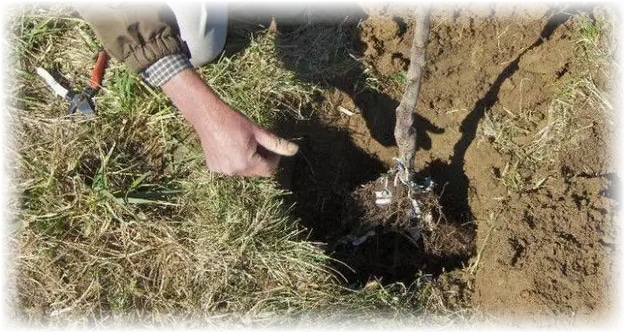
If several plants are planted nearby, then the distance between them is left at least 2.5 m.
Tree care
Many gardeners neglect tree maintenance. Many summer residents are limited to just watering the trees sometimes. But besides this, it is important to regularly fertilize the soil, loosen the soil and cut the crown. All these measures will increase the yield, as well as the resistance of the apple tree to diseases and insects.
Feeding rules
In the spring, the first top dressing is applied. They introduce organic matter, as well as mineral supplements. At least, fertilizers are applied to the soil 2-4 times. But if apple trees grow poorly, then the amount of applied fertilizers, as well as the frequency, are increased.
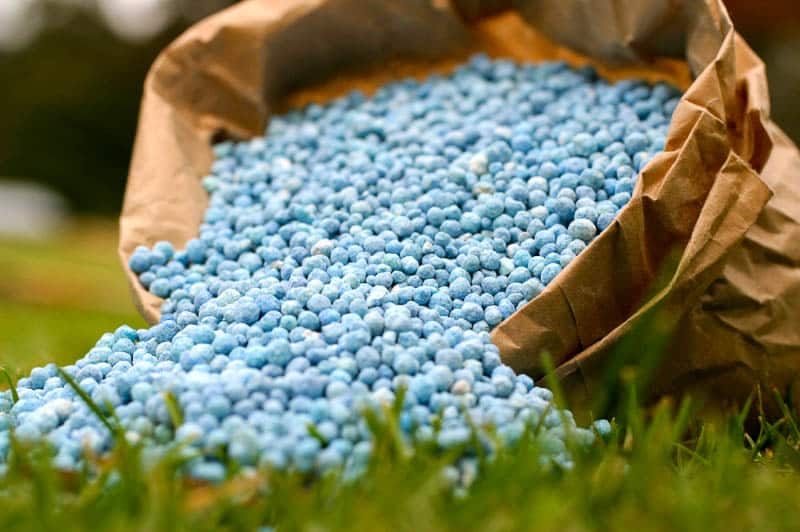
Spring
With the onset of spring, fertilizers are applied that are rich in nitrogen. Nitrogen has a positive effect on bud growth and ovary formation. The following fertilizers are suitable:
- ammonium nitrate;
- humus;
- nitroammophoska;
- urea.
The soil is loosened and mixed with fertilizer, then watered with water.
Bloom
During flowering, chicken manure, superphosphate, mullein or potassium sulfate are added to the soil. Any top dressing is diluted with warm water and then the trees are watered. In autumn, the soil is fertilized with wood ash and peat or manure mixed with the soil. A few weeks before the onset of cold weather, nitrogen-containing fertilizing should not be applied, since nitrogen activates growth, and in the fall, fertilizing should be aimed at preparing the apple tree for cold weather.
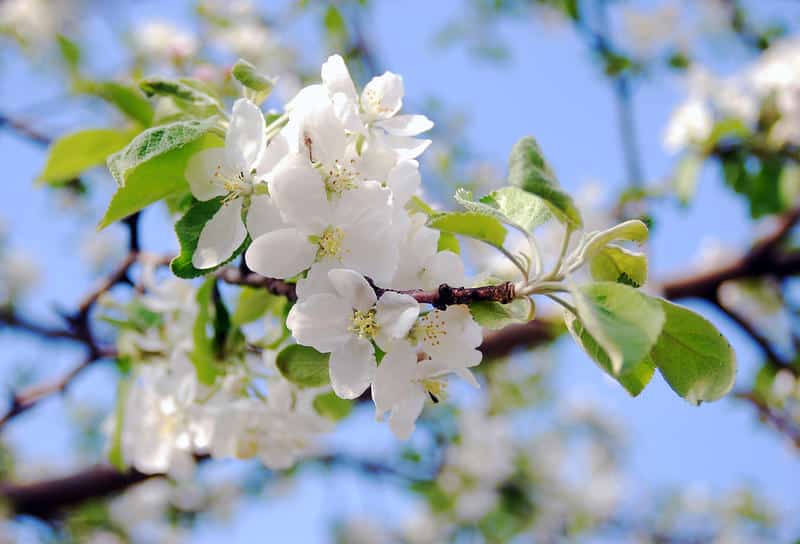
Pouring fruit
It is also important to make top dressing while pouring the fruit. The following solutions are introduced into the soil:
- Pour 10 buckets of warm water into the barrel and add 15 g of sodium humate and 550 g of nitrophoska. Then mix the fertilizers thoroughly so that they dissolve in water. 2-3 buckets of fertilizer are poured onto one tree.
- Fill the barrel with warm water, then lay out the green grass. Cover the barrel with cling film and make a small hole in it. After 30 days, the fertilizer is ready, and the apple trees are watered with it.
Thanks to top dressing, apples grow large and sweet.
Watering features
Apple trees do not need a lot of water, except for young seedlings. Seedlings are watered several times a week. Mature trees are watered 4 times per season. First time after snow melt. The second time is during the formation of kidneys. Then during fruiting. And the last time - before the onset of cold weather.
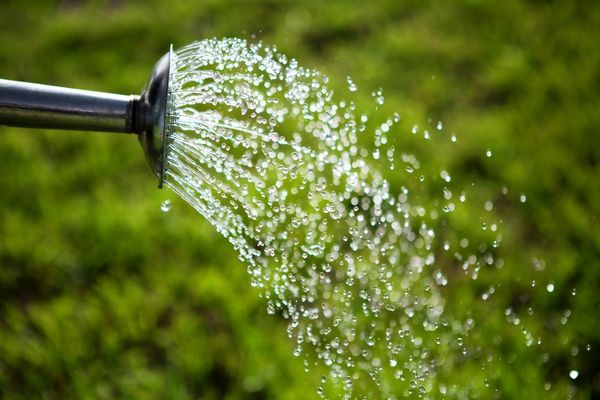
Crown formation
In the spring, formative pruning is carried out and young branches are cut. Due to its weak thickening, the apple tree does not need serious pruning. In the fall, cut off dry, broken branches. Use only sharp scissors or a garden pruner for pruning. After cutting, the cut sites must be disinfected.
Tree processing
Trees are treated with the “Healthy Garden” preparation against scab and other fungal diseases. With the onset of autumn, the trunks from the mice are treated with diesel fuel and the barrel is wrapped with a cloth dipped in diesel fuel. In spring, trunks and branches are whitewashed with lime solution or special garden paint.
Harvesting and storage
Harvest immediately after red apples have begun to appear. It is not worth waiting for the moment until the fruits begin to fall off, so as not to collect wormy apples. The harvest is stored in a cool room, where bright sunlight does not penetrate, at a temperature of no more than +15 degrees. The harvested crop is stored until autumn. But apples do not lie for a long time, so it is recommended to use them as soon as possible.



